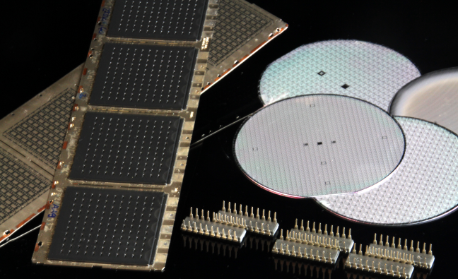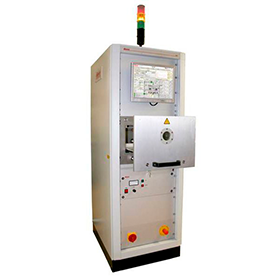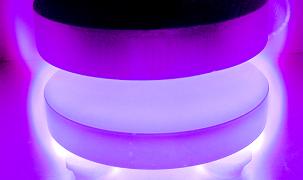Plasma Treatment Articles
Plasma Etching
|
3 min read

Plasma etching is a process used to remove material from the surface of a substrate using a plasma created with oxygen, argon, CF4 or other appropriate gasses. Etching is an important process used in the semiconductor industry to develop patterns on silicon wafers for microelectronic and dielectric devices. In plasma etching, ionization is used to create a plasma, and the plasma is applied to the surface of the substrate to remove material.
A plasma system is used to produce exact patterns. Plasma etching can also remove material from delicate surfaces without damaging them through excitation and dissociation.
There are two main types of plasma etching: bulk plasma etching (anisotropic) and reactive ion etching (isotropic). Bulk plasma etching is the most common type of plasma etching and is used to remove material from the surface of a substrate. Reactive ion etching is used as a directional etching process to produce a straight sidewall and allow the aspect ratio of etch depth to sidewall undercut to be controlled.
 Plasma etching is used to remove materials from a substrate using a reactive plasma. The plasma is generated by applying a high voltage to a gas, which breaks down the gas molecules into their constituent atoms. Some of these atoms are then ionized, meaning that they acquire a charge and when they contact the surface, they remove material from it.
Plasma etching is used to remove materials from a substrate using a reactive plasma. The plasma is generated by applying a high voltage to a gas, which breaks down the gas molecules into their constituent atoms. Some of these atoms are then ionized, meaning that they acquire a charge and when they contact the surface, they remove material from it.
Plasma surface treatment can etch away isotropic materials such as silicon, glass, plastics, and metals. It is often used in semiconductor manufacturing to create features such as logic gates and interconnects. RF plasma etching systems are also used to fabricate printed circuit boards and produce medical devices.
The first step in plasma etching is to clean the surface of the workpiece. The next step is to select the appropriate gas for plasma etching of your material. Typical gasses used in plasma etching include argon, fluorine, and oxygen. Using oxygen plasma treatment dissociates hydrogen and carbon-containing molecules providing a repeatable and easy to use etching method.
Once the gas has been selected, it is time to turn on the radio frequency source. This will create an electromagnetic field that will ionize the gas, turning it into plasma. The plasma will then etch the surface of the workpiece. The depth of the etch and the etch rate can be controlled by adjusting the power of the RF source. The RF is most commonly either 13.56 Mhz or 40 Khz, 80 Khz, 100 Khz and 2.45 Ghz.
Plasma processing is a versatile process that can create various directional effects. It can be used to remove material from a surface, modify the surface properties of a material, or prepare a surface for further processing.
A plasma etcher is a device that uses plasma to etch or remove material from a polymer substrate, oxide, metal, glass or ceramic. Plasma is a highly ionized gas that can be used to clean, etch, and deposit materials on surfaces.
Chemical etching is the process of using chemicals to remove material from a substrate. Chemical etching is often used to remove metals from printed circuit boards (PCBs) and other electronic components. It can also be used to create patterns and shapes on metal surfaces. Photo Chemical etching is a versatile manufacturing process that offers many advantages over traditional machining methods.
Plasma etching is a more precise and controlled process than chemical etching. Plasma etching can be used to remove very thin films of material, making it ideal for applications where high accuracy is required.
Both plasma etching and chemical etching have their advantages and disadvantages. The best process for a particular application depends on the project's requirements.
 There are several advantages to using plasma etching over other material removal methods, such as chemical etching or mechanical abrasion, as mentioned earlier.
There are several advantages to using plasma etching over other material removal methods, such as chemical etching or mechanical abrasion, as mentioned earlier.
One advantage of plasma etching is that it can be used to remove materials with high selectivity. Only the desired material is removed, and the underlying substrate is not damaged.
Another advantage of plasma etching is that it can be used to remove very thin layers of material. This makes it ideal for applications where precise control over the depth of material removal is required, such as in the manufacture of semiconductor devices.
Finally, plasma etching is a relatively fast process, making it suitable for high-volume manufacturing applications.
Plasma etching is always dry. This is due to the process being performed in a vacuum chamber using gas as a feedstock. Wet etching is a chemical process using liquid chemistry as a feedstock. This defines the difference between dry plasma etching and wet liquid chemistry etching.
As the world progresses, so does technology. With every new generation of products, there are higher expectations in terms of performance and functionality. Manufacturers must constantly strive to improve their manufacturing processes and develop new technologies to meet these demands. One such technology is plasma etching.
Plasma etching is a process that uses plasma to remove material from a substrate. Plasma etching is vital for product development because it can make very small features with high precision which is a production requirement for many new products, especially consumer products.
There are many advantages to using plasma etching in product development. First, it is a very versatile process that can create a wide variety of patterns. Second, plasma etching is an exact process that allows for the creation of tiny features. Third, plasma etching is a relatively fast process, which can save time and money in the product development cycle.
Overall, plasma etching is an important tool for product development. It offers several advantages that make it well suited for developing new and innovative products.
To learn more about plasma etching and its benefits for cleaning small parts in manufacturing, please read our article titled "Plasma Etching and Cleaning Strategy for Better Product Quality."
Plasma: +1 (248) 761 9253
Distribution: +1 (248) 549 8600
Fax: +1 (248) 549 3533
info@thierry-corp.com
Comments